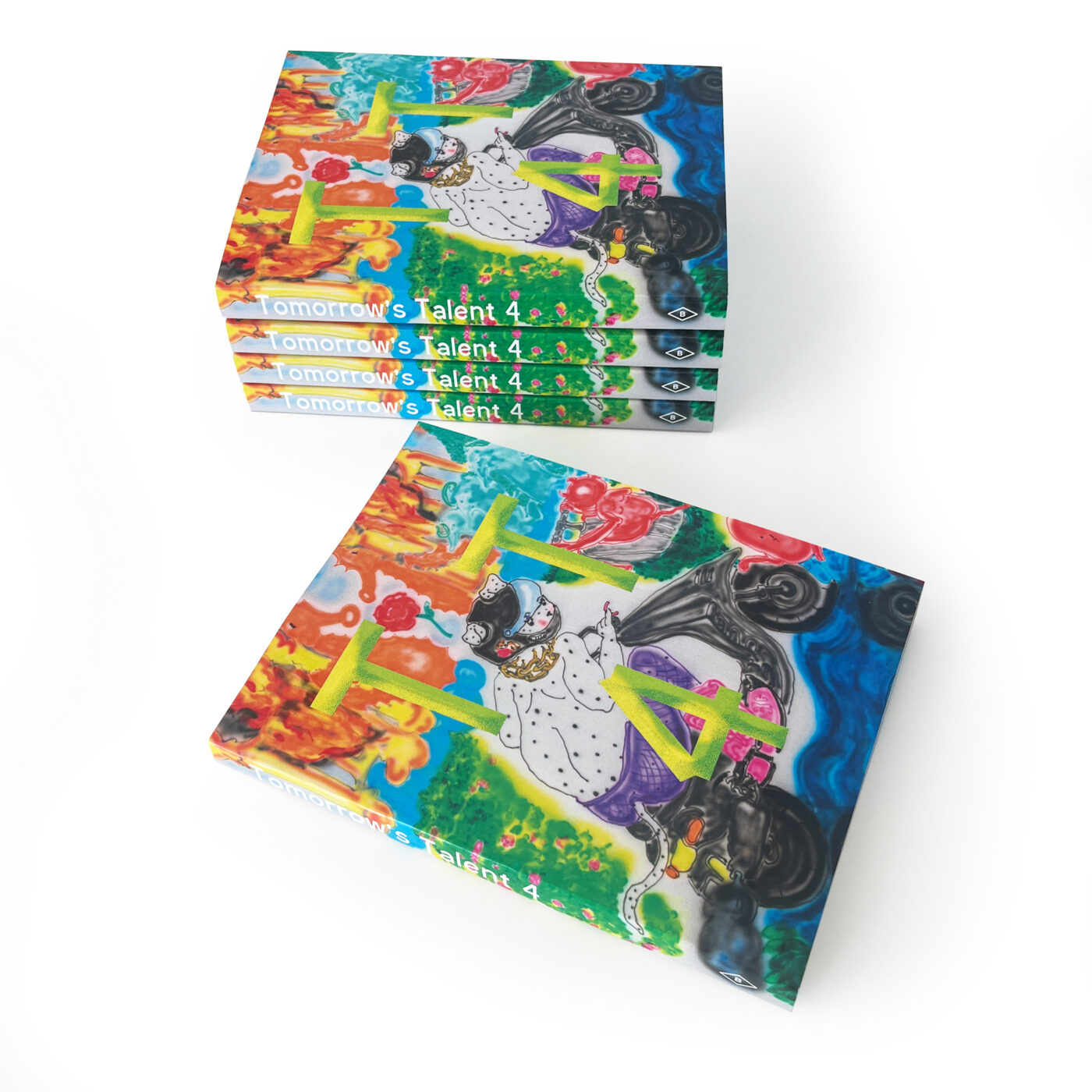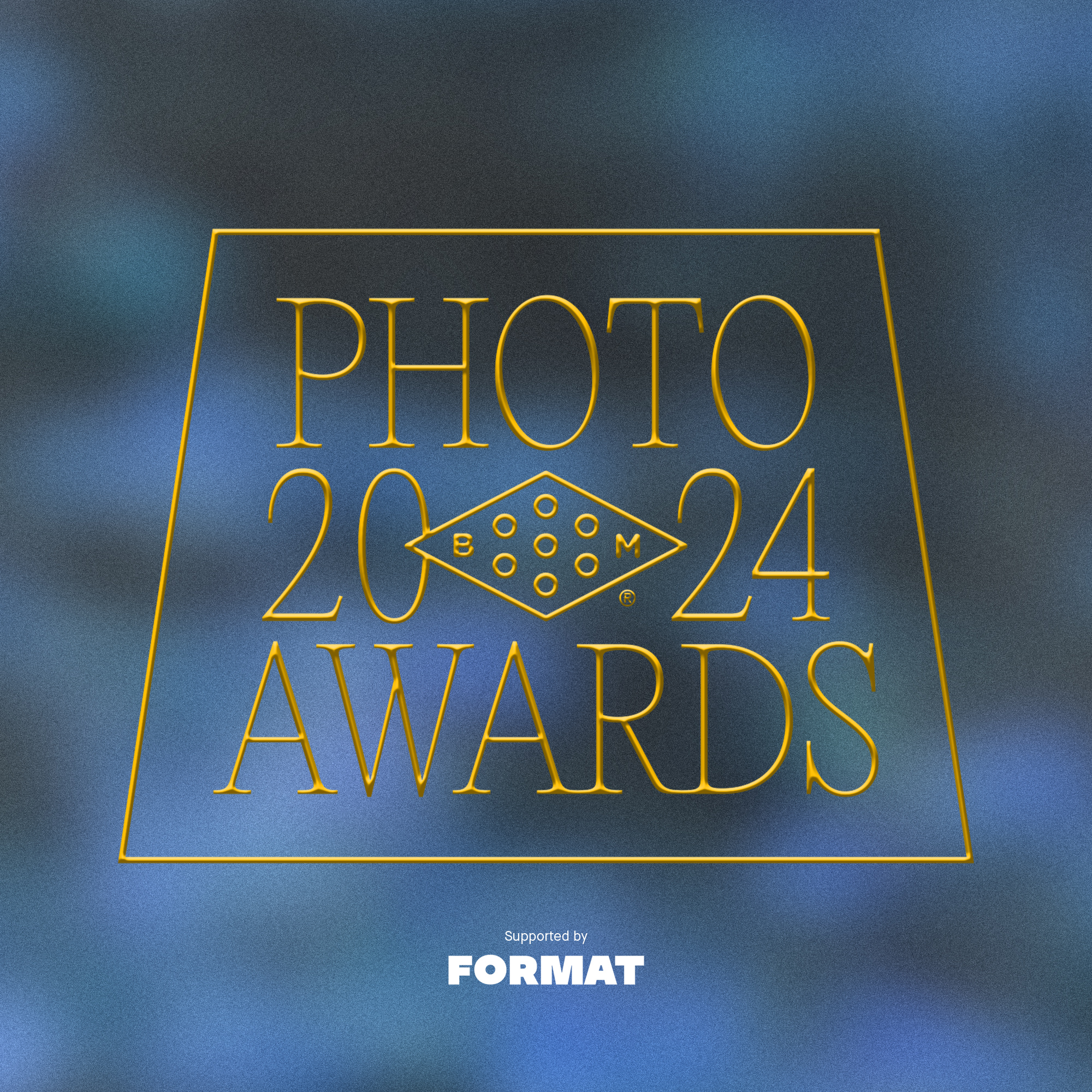At first glance, there’s a machine-like precision to Carl Krull’s work, but lean in a little closer and what you see feels a lot more organic and imperfect. The Danish artist’s process allows tiny imperfections in a line to grow and multiply, and ripple across the page in all directions like an untamed wave.
Jeff Hamada: Is there an aspect to your work that is particularly Danish?
Carl Krull: I wouldn’t say so. Although you could argue that just the fact that I have grown up in Denmark would definitely have an influence on my work. Probably some part of Danish aesthetics can be found in what I do. But I rather prefer to see my work, as something that doesen’t relate to specific contries and which is not bound by borders.
Jeff Hamada: Can you describe the small island where you were born? Your work makes me wonder what the actual landscape looked like.
Carl Krull: I only spent a short time at the island of Ærø after being born, but we often visited my family there when I was a kid. I have a lot of good memories from that time, many of them related to the sea and time spend at the beach.
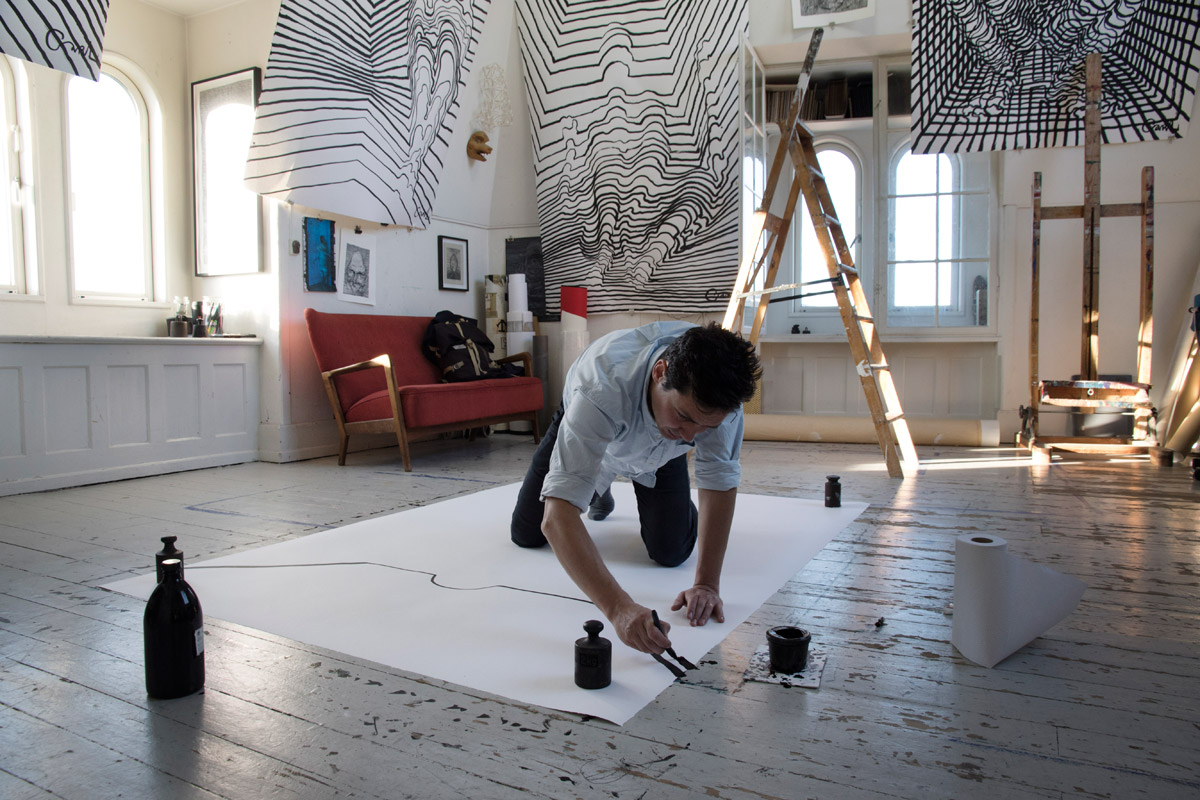
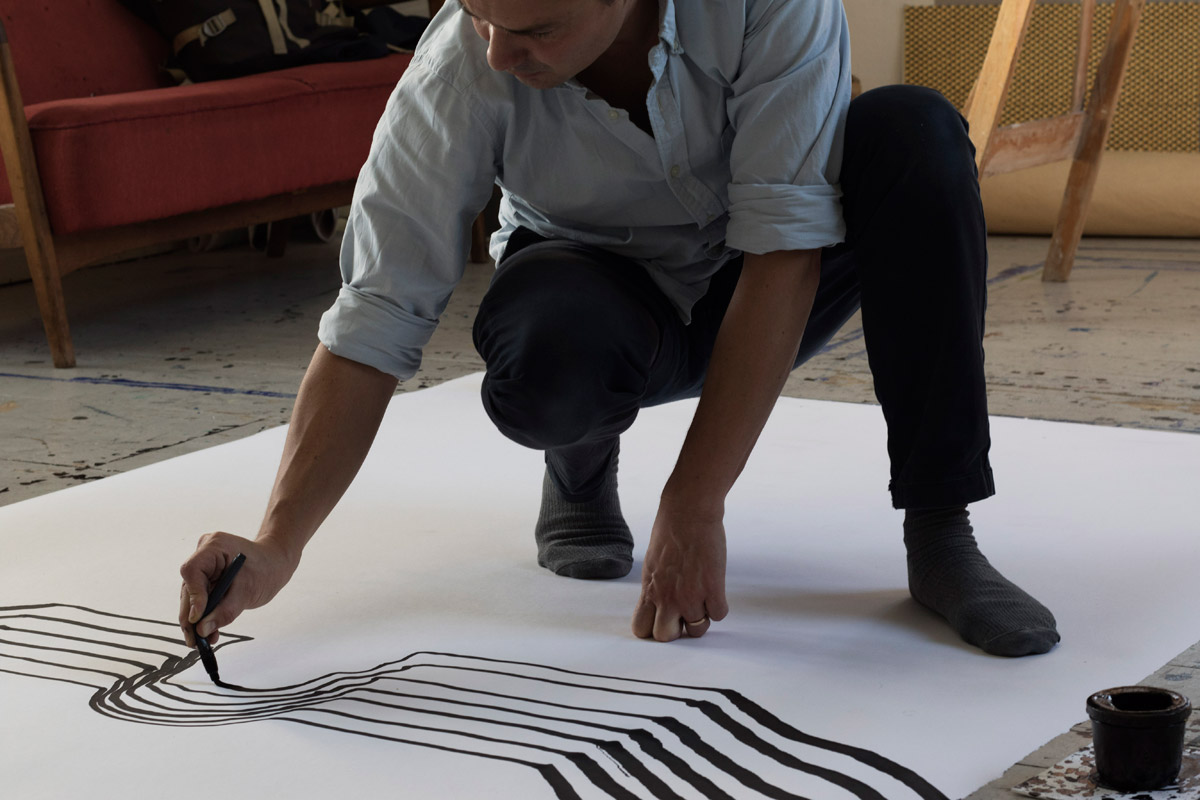
Jeff Hamada: What things were influencing and inspiring young Carl Krull?
Carl Krull: From childhood I have been surrounded by the black and white woodcuts of the danish artist Palle Nielsen, and I also remember the posters of the polish artist Franciszek Starowieyski, to this day I still find their works absolutely brilliant. I have also always admired the comics of Moebius and remember the first time I saw the mind-blowing drawings of Egon Schiele. Studying at the Art Academy in Cracow influenced me a lot. And both my Professor Stanislaw Wejman and Darius Vasina who was an assistant at the time, were and still are good friends of mine today, and both had a huge impact on my work. But all that being said, probably my parents who are both artists, have had the most profound impact of all. My mother Maria Struzik-Krull is polish and my father Hans Oldau Krull is danish, they met each other and fell in love, at the Art Academy in Cracow, Poland, same place where I later went to study myself.
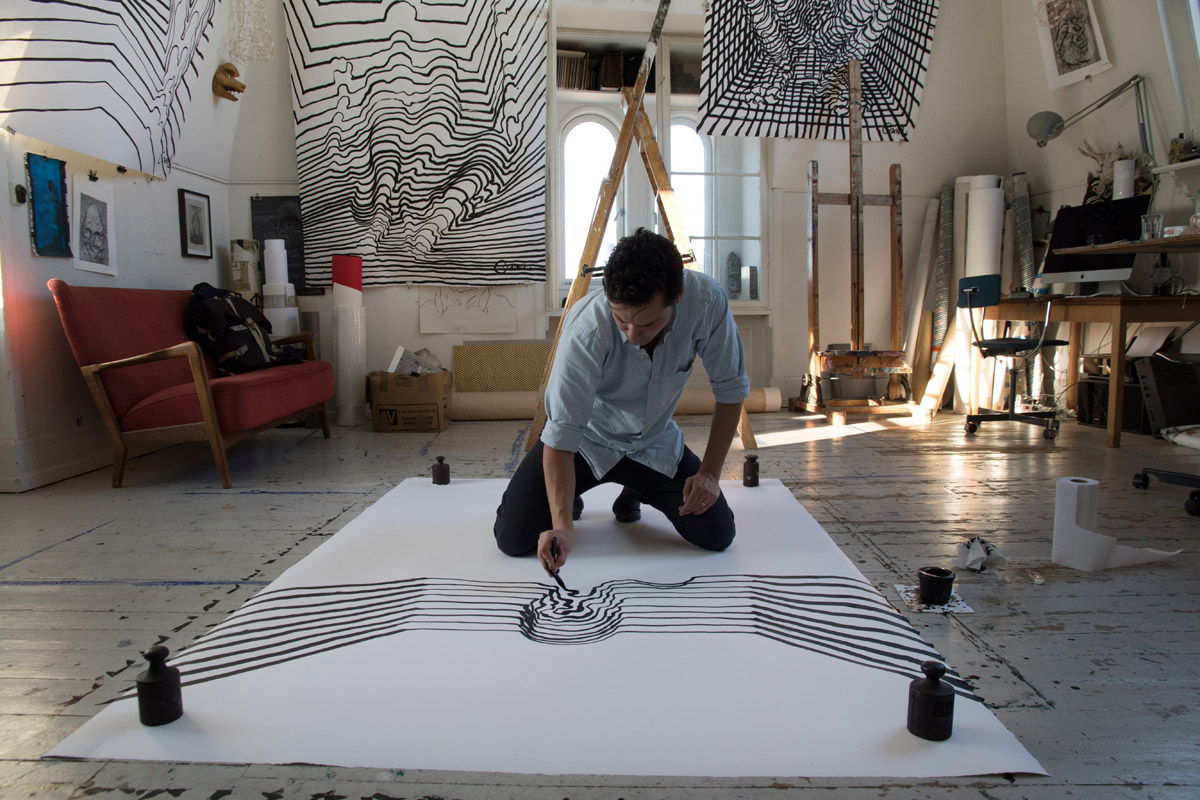
Jeff Hamada: Your drawings feel almost as though they emerge on their own—like you’re simply revealing something that is already there. Can you talk a little bit about how you arrived at this “topographical” way of drawing?
Carl Krull: I had been using linear hatching and cross-hatching to emphasize a sense of dimension in my drawings for many years. It worked well for portraying depth, but I started to feel the technique separated the background from the figure in an undesirable manner. Or rather I didn’t like how mechanical it felt drawing the lines that were just portraying depth in the background. So I started searching for a way to break those constraints. Eventually I found a way. At first I drew caves and ripples on water, giving each line more and more individuality.
The breakthrough came as I started a new drawing with a line running from the edge of the paper horizontally towards the center. It was a straight line with no personality, a line that would normally just have stayed in the background. But after running for a while, the line rose slightly and fell back down in a u-turn, forming the shape of an eye, and continued returning parallel with itself back to the edge of the paper, just below where it had started. Background and foreground had been united. I had somehow found new way of approaching drawing. Instead of lines acting as borders, separating inside from outside, I started stacking lines one by one. Every line with its own characteristic flow but still corresponding and relating to the previous line. In a seismic wave, drawing had come a step closer to sculpting.
Jeff Hamada: Speaking of which, how do you see your sculptural work relating to the drawings? I believe this is a new direction for you.
Carl Krull: I was very surprised with how naturally sculpting came to me. I draw in an almost sculptural manner, and my expression is of a topographical nature which is always trying to break with the two-dimensional surface of the paper. Recently when I was doing some work with drawing in virtual reality, and found myself drawing in a three dimensional space. I found the lines I drew were running along the surface of an invisible gigantic head, of which I was standing in the middle. Basically what happened when I worked on the sculpture, was exactly the same thing. But instead of drawing a three dimensional head I was instead excavating it from the inside. The sculpture was made by digging two holes in the ground, the left and right side of the head seen from the inside. The holes were then filled with concrete, and finally pulled out of the ground and put together. I call the sculpture “Subterranean” it’s a 2.5 meter tall concrete head weighting 29 tonnes.
Jeff Hamada: I loved those scroll drawings you were doing in the car (we posted the work back in 2013) where every bump in the road dictated your line. Is there any parallel between that process and the way you’re living your life?
Carl Krull: I guess in some sort of holistic way there is. Work and play are two sides of the same coin to me. Everything in life is a journey, and what’s happening around me affects my state of being. But although bumps in the road has a say in how a line may run, its direction and destination is still being determined by the one holding the pen.
Jeff Hamada: Would you describe you or your work as obsessive?
Carl Krull: Sure, obsessive, meditative, explorative, it is many things. As I mentioned earlier, what I do is who I am. I can’t stop working as long as I’m alive.
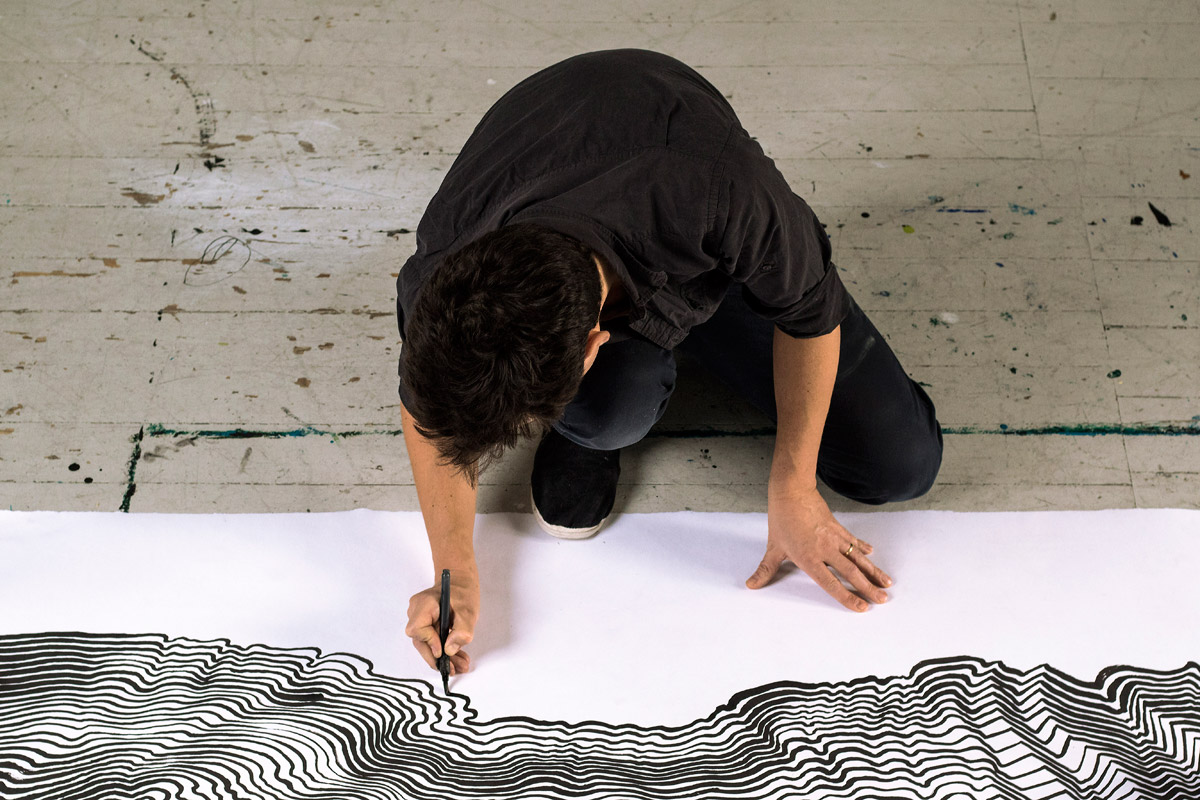
Jeff Hamada: What’s one thing you’d like to accomplish this year?
Carl Krull: After a 10-year long break from painting on canvas, this year I’ll take it up again. I look very much forward to what this new venture will bring. I hope it will add a new interesting dimension to my practice, and that I’ll break open up new territories I didn’t know existed. I guess that was one thing, but I would also love to do more subterranean sculpting.
Jeff Hamada: And what about one thing you’d like to accomplish in your life time?
Carl Krull: To pass on the happiness and love I have felt throughout all my life to my children, and to see them live fruitful lives full of love.
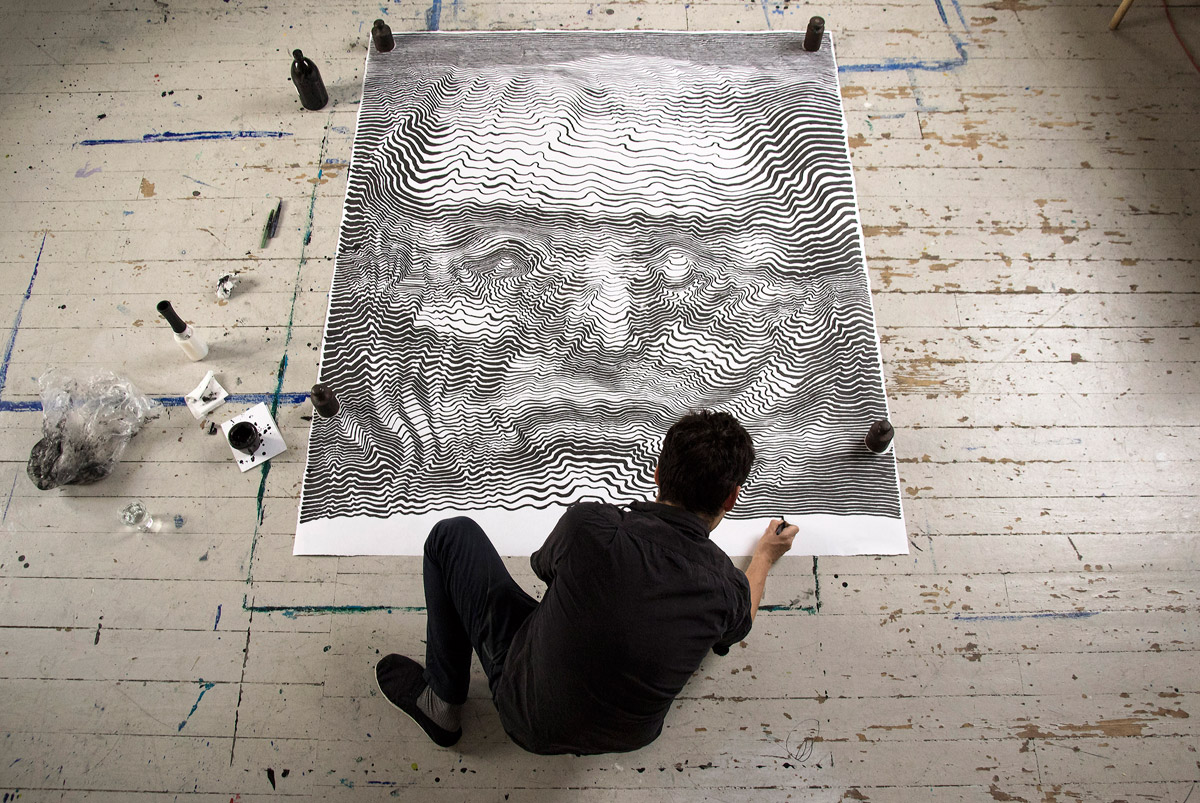
Booooooom Shop: Tomorrow’s Talent 4
Featuring the work of 60 fine artists and illustrators, tomorrow’s Talent 4 is now officially available in our shop!
Learn more2024 Booooooom Photo Awards
Calling all photographers! The Booooooom Photo Awards are back and officially open for submissions!
Learn moreRelated Articles
